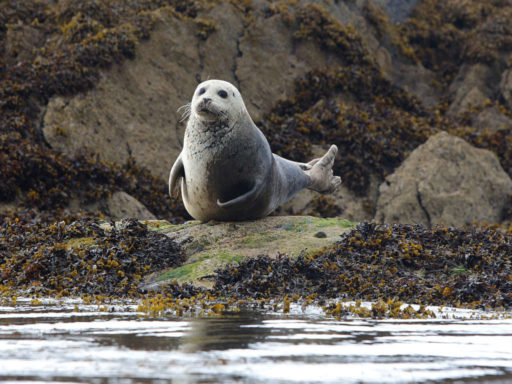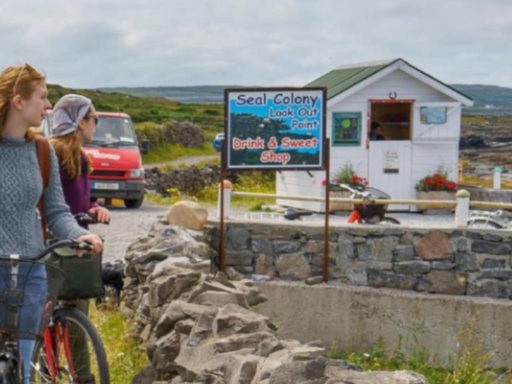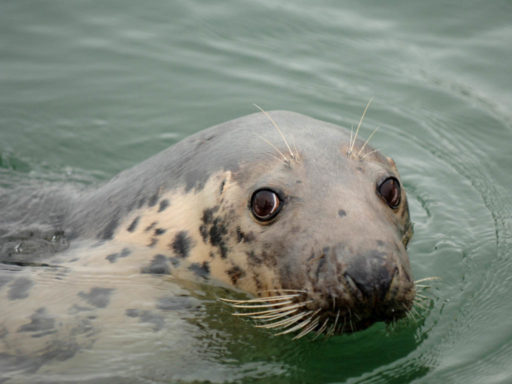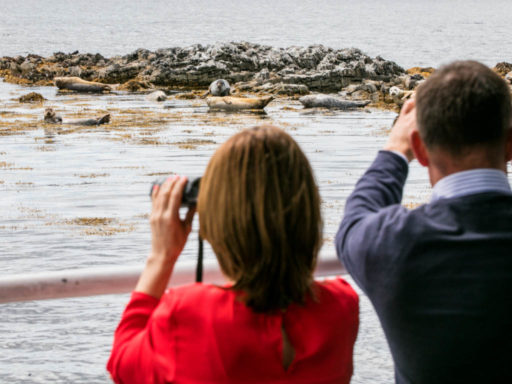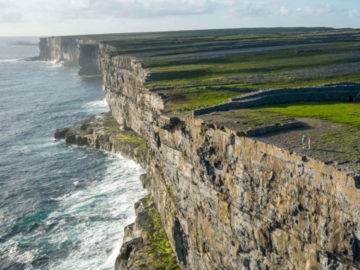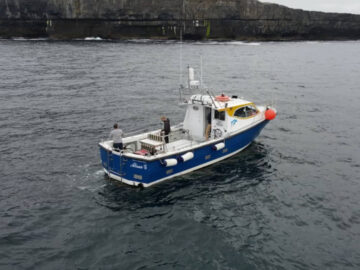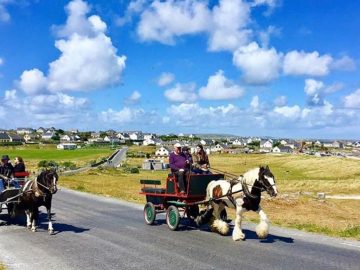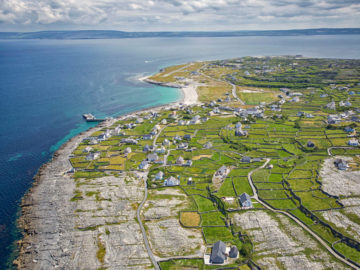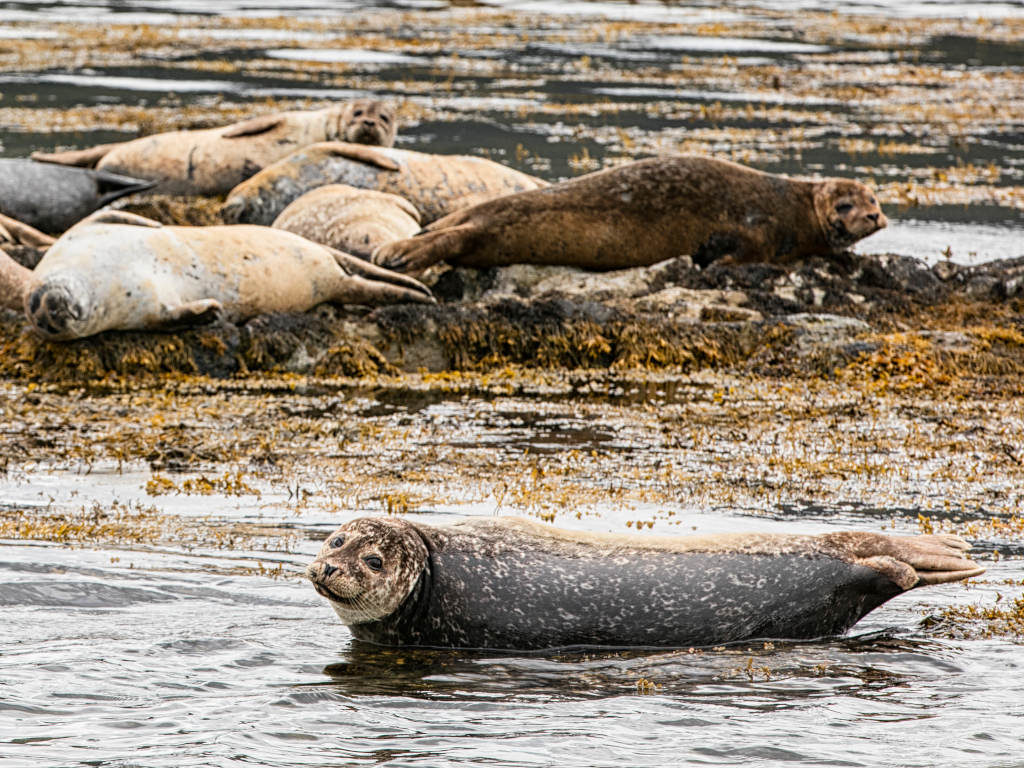
The Seal Colony on Inis Mór
Visit the Seal Colony Viewpoint on Inishmore 🦭
When touring Inis Mór, the largest of the Aran Islands, one of the most popular stops to visit is the famous Seal Colony. The colony is situated on the northern side of the island close to Kilmurvey Beach, on the road to Dún Aonghasa and is clearly signposted with a small cabin selling snacks at the viewing point. At low tide, a dozen seals congregate on the beach and rocks, creating a beautiful sight with the mountains of Connemara as its backdrop.
About the seals
The seals are grey in color and can weigh as much as 510 lbs (235kg). The seals preferred diet consists of fish such as salmon and pollock which they hunt out during high tide. Quiet and serene, they enjoy sunbathing at low tide during summer.
The Grey Seal (Rón Glas in Irish) is one of Ireland’s two native seal species. They are also referred to as the ‘Atlantic Seal’ and they are one of the world’s least common seals and the first to be designated as a protected species.
Grey Seals are very strong swimmers, and capable of diving to 60 meters for food while holding their breath for up to half an hour at a time. Because their mothers’ milk is high in fat (40% fat), baby seals put on weight rapidly gaining roughly 2kg per day and display a coat of silky white fur. Grey seals have a life expectancy of up to 25 years.
Ireland bears a specific responsibility for the welfare of Grey seal colonies, as the country’s coast is home to half of Europe’s population.
Connection with the Islanders
Seals have a long and complicated relationship with islanders. They were sometimes seen as fishermen’s foes, due to their unpleasant habit of munching on fish trapped in nets before the catch was pulled aboard.
Seals, on the other hand, have a long history of legend surrounding them. Selkies, mythological beings capable of transforming from seal to human form by shedding their skin, are frequently featured in these stories. The Oscar-nominated Irish animated movie ‘Song of the Sea’ made Selkies famous (2014 film).
During the 18th and early 19th centuries, seals were caught for their meat and fur. Many seal species were on the verge of extinction as a result of this. However, since the 1950s, laws restricting the hunting of seals have enabled their numbers to recover, with the population now steadily increasing.
The Seal Colony on Inis Mór
How to find the Seal Colony
If the tide is in your favor, you can observe the island’s seal colony bathing along the coast road to the west of Kilmurvey Beach. Choose a clear day for your adventure and watch the amazing creatures, sometimes up to 20 together at a time, relaxing on the rocks. Bring your binoculars and keep an eye out for wild swans at the neighboring lake for a very unique spectacle.
FAQs about Seals in Galway
Where can you watch seals in Galway?
- Inishbofin Island: There are two seal colonies near Inishbofin Island. One is situated on an island close to Stags Rock, and another is located one mile west of Inishbofin Harbour on the island of Inishgort.
- Aran Islands: The prime seal-watching location on the Aran Islands is the Inis Mór seal colony. You can catch sight of seals during low tide when they bask on the rocks.
- Galway City: Seals can be observed swimming around the Claddagh area of Galway City as the tide rises. They often appear when fishermen return with their catch and throw fish scraps into the water.
- Salt Lough at Mannin Bay: In Connemara County, Galway, near Ballyconneely, a colony of common seals resides. You can spot seals basking on the rocks, especially during sunny days. The causeway at the lough’s head is a great vantage point for observing birds feeding on rocks covered in mud and seaweed during low tides.
What types of seals are in Ireland?
- Common Seal (Harbor Seal): The common seal, also known as the harbor seal, is the smaller of Ireland’s two pinniped species. Adult males can grow up to 2 meters in length and weigh around 150 kilograms, making them larger and heavier than females. Adult females typically weigh about 130 kg and have a body length of around 1.8 meters.
- Grey Seal: Substantial populations of Grey Seals exist on Ireland’s east and southeast coasts, but it is the western seaboard where they are most prevalent.
